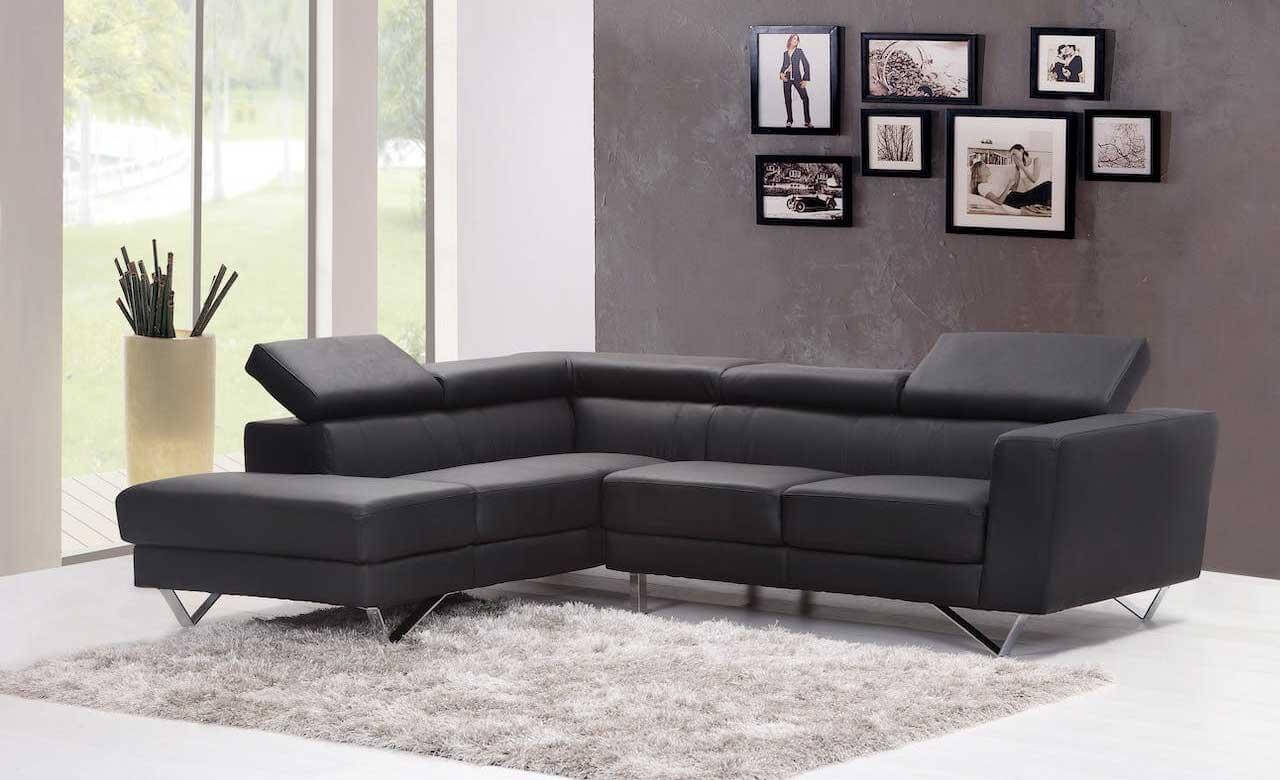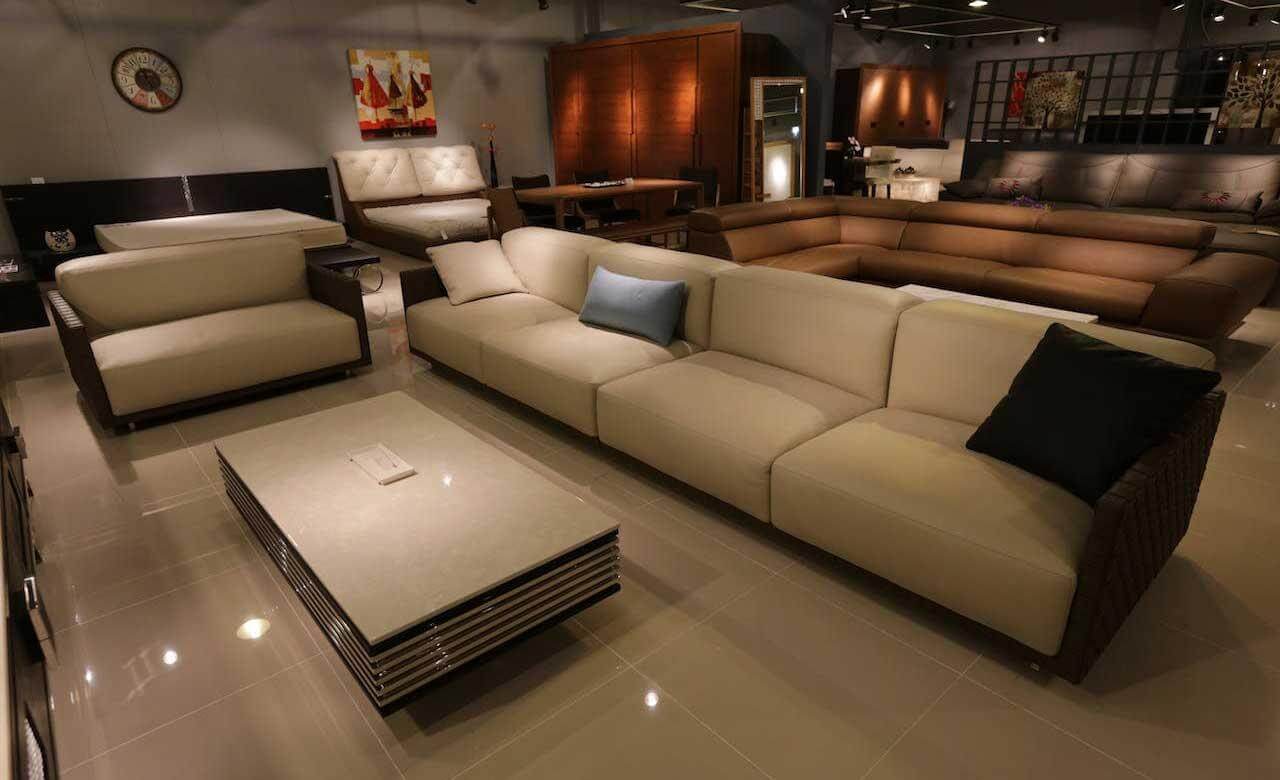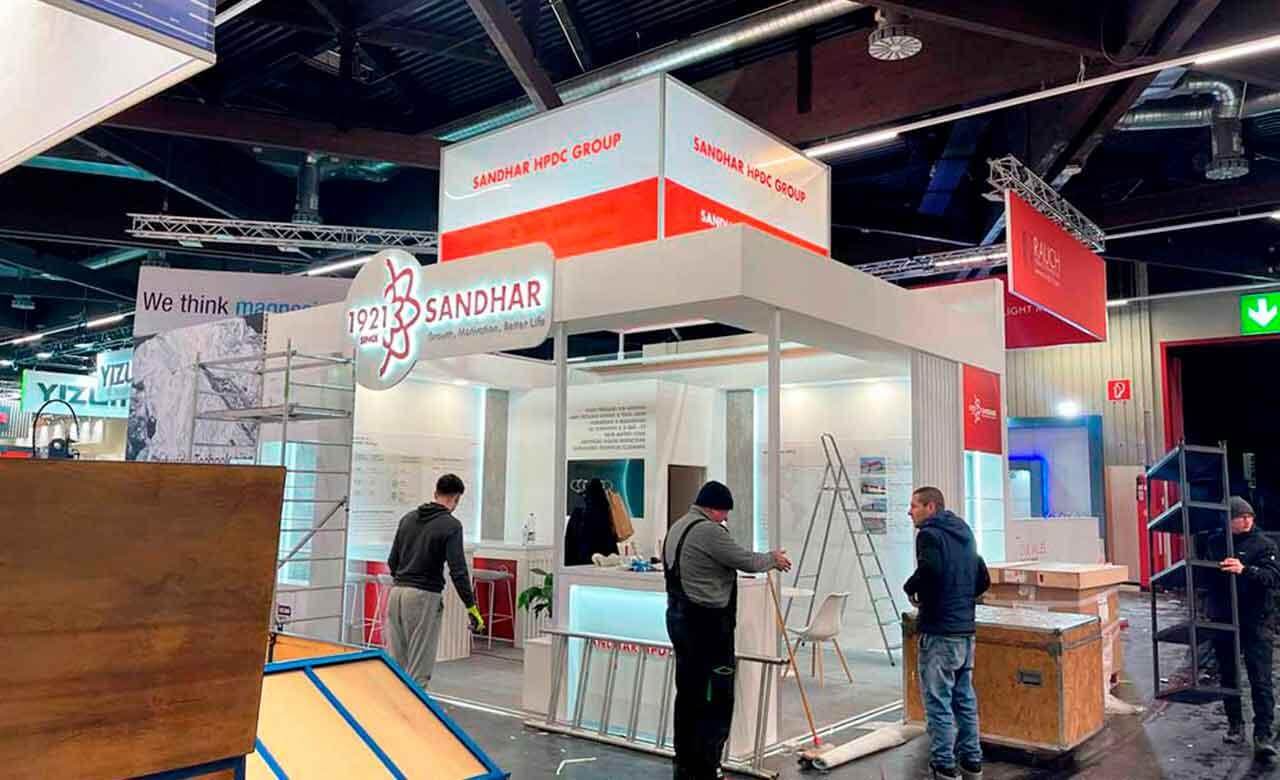
European trade fairs occupy a crucial place in the ever-evolving home design and technology world. Not only do they showcase the latest trends and innovations, but they also serve as a place where professionals and companies from different fields come together. These events provide a unique opportunity to learn about cutting-edge gadgets and design ideas and make invaluable connections within the industry. The impact of these trade shows goes beyond mere display: they actively shape future trends and business strategies. For those in the home design and technology industry, attending these shows is not just beneficial but essential. And for those companies that sell in these niches, participation in these exhibitions opens up broad horizons for development.
List of Key Exhibitions for Home
This article section provides information about the most significant and prestigious exhibitions worldwide.
IFA Berlin (Berlin, Germany)
Held annually in Berlin, Germany, usually in early September.
Themes: IFA Berlin is known for showcasing various consumer electronics and home appliances. It focuses on the latest technology, from smart home gadgets to cutting-edge audiovisual equipment.
It’s an essential event for tech enthusiasts and professionals who want to keep up with the latest trends in consumer electronics.
Pitfalls: Attendees may find the event’s sheer size overwhelming, and the focus on consumer electronics may mean that traditional home design elements are underrepresented.
Salone del Mobile Milano (Milan, Italy)
Held annually in April in Milan, Italy.
Themes: This exhibition is celebrated for focusing on high-end furniture and design. It’s a trendsetter in home decor, showcasing innovative design, sustainability, and luxury living.
It’s a must-see for anyone interested in the latest furniture and luxury home design trends.
Pitfalls: The emphasis on luxury can sometimes overshadow more affordable and practical design solutions.
IMM Cologne (Cologne, Germany)
Held every January in Cologne, Germany.
Themes: IMM Cologne is known for presenting a comprehensive view of international home furniture and interior design.
It offers great insights into the global furniture market and upcoming interior design trends.
Pitfalls: Because of its broad scope, it may require more depth in certain design areas than more focused shows.

Maison&Objet (Paris, France)
This exhibition occurs twice a year, in January and September, in Paris, France.
Themes: Maison&Objet is all about home, interior design, architecture, and lifestyle culture. It is well-known for its diverse mix of styles and international exhibitors.
It’s an ideal venue for those seeking a comprehensive overview of global lifestyle and interior design trends.
Pitfalls: The expansive scope of the event can make it difficult for visitors to explore all areas of interest fully
3daysofdesign (Copenhagen, Denmark)
Held annually over three days in May in Copenhagen, Denmark.
Themes: This event focuses on Danish design, showcasing everything from furniture to lighting and decor. It’s known for its emphasis on minimalist and functional design.
Perfect for lovers of Scandinavian design and those looking for a minimalist, functional aesthetic.
Pitfalls: The focus on Danish design may limit exposure to more diverse international design perspectives.
Design Miami/Basel (Basel, Switzerland)
Held annually in June in Basel, Switzerland.
Themes: This exhibition is a global forum for design, with an emphasis on collectible design objects and high-end furniture.
Ideal for collectors and those interested in the intersection of art and design.
Pitfalls: The emphasis on collectibles may not appeal to those looking for practical and affordable design solutions.
Stockholm Furniture Fair (Stockholm, Sweden)
Occurs every February in Stockholm, Sweden.
Themes: This fair is a leader in Scandinavian design, showcasing innovative and sustainable furniture and lighting.
A key event for those interested in sustainable, innovative, and Scandinavian designs.
Pitfalls: Like other region-specific exhibitions, it may offer limited insights into global design trends.

Decorex (London, UK)
Held annually, usually in October, in London, UK.
Themes: Decorex is known for high-end interior design, featuring luxury interior design products.
It’s an essential event for professionals and enthusiasts interested in luxury interior design.
Pitfalls: The focus on luxury interiors may only be for some tastes or budgets.
Home Decor (Poznan, Poland)
Held annually in Poznan, Poland, with varying dates.
Themes: This exhibition focuses on interior design and offers a wide range of home furnishings and accessories.
Great for those looking to explore Eastern European design trends and home decor products.
Pitfalls: May lack the international prestige or breadth of larger, more established shows.
Who benefits from these exhibits?
Both visitors and attendees will find these exhibitions exciting and valuable.
For the average visitor, they are a portal to new trends and innovations. These exhibitions are a treasure trove of inspiration and innovation for the average enthusiast or homeowner. They offer a unique opportunity to learn about the latest trends in home design and consumer electronics. Regular visitors can immerse themselves in new gadgets, furniture designs, and decorating ideas to see how they can enhance their living spaces. These events serve as a comprehensive showcase of new products, helping people stay ahead of the curve in home design and technology.
For businesses, it is a platform for growth and networking. The importance of these shows to businesses cannot be overstated. They are more than just a show floor; they are centers of opportunity.
Companies have an excellent opportunity to showcase their products to a broad and diverse audience. It’s a chance to showcase innovations, demonstrate product performance, and get first-hand consumer reactions.
Companies can network with potential partners, suppliers, and customers. These contacts can lead to fruitful collaborations, partnerships, and even new business ventures.
In addition, attending trade shows allows companies to gain first-hand insight into market trends and consumer preferences. This insight is critical for developing strategies to meet market demands and stay ahead of the competition.
Brand visibility and awareness: Participation in such events significantly increases brand awareness. It is an effective way to reach new markets and gain industry recognition.
- Learning and innovation: Companies benefit from observing competitors and other industry players. Such observation encourages innovation, inspiring companies to think creatively and push their boundaries.
- Direct customer feedback: Direct communication with customers at trade shows provides invaluable feedback. Companies can learn what customers like, dislike, and what they would like to see in future products.
- Global exposure: These shows are a gateway for companies looking to expand globally. They provide a platform to reach international markets and understand global consumer trends.
- Media coverage: Many events attract significant media attention, allowing companies to gain exposure. This can be particularly useful for new product launches or major announcements.
Useful Tips for Exhibition Visitors
Attending a major trade show can be exciting yet overwhelming. Effective planning is critical to maximizing your time and experience, whether you are a company or a casual attendee. Below are strategies and tips to help you successfully navigate these events.

Strategies for Optimizing Your Time as an Attendee
Optimizing your time at the show is critical to maximizing your enjoyment as a visitor and exhibitor.
- Define your goals. Determine what you want to accomplish, whether learning about new products, networking, or gaining industry insights. Focus on areas and exhibitors that align with your goals. This will keep you from being distracted by less relevant shows.
- Prioritize shows and events. Study the list of exhibitors and scheduled events before the show. Prioritize those that are most relevant to your goals. Set aside specific times for key exhibits and events. This will help you manage your time effectively throughout the day.
- Effective navigation. Study the exhibit map to understand the layout, including the location of key exhibits, restrooms, food courts, and exits. Plan a route that allows you to visit booths and events and minimize return travel efficiently.
- Time Management. Arrive early to avoid crowds and have more meaningful conversations with exhibitors. Set a rough time limit for each exhibit so you have time to visit all the important ones.
- Networking Strategy. Having a few meaningful contacts is much more helpful than many superficial ones. Attend mixers or networking sessions, an excellent opportunity to meet a concentrated group of industry professionals.
- Take Breaks and Refreshments. Schedule short breaks to avoid fatigue. This will help you stay focused and energized. Carry a water bottle and snacks, or find out where the food vendors are for quick refreshments.
- Use Technology. Use the show app to get real-time updates, navigate, and manage your schedule. Quickly jot down notes or snap photos for later use.
- Be flexible. Be prepared to deviate from your plan if you encounter an exciting opportunity or exhibit.
- Review after the show. At the end of the show, review your notes and collected materials and determine what follow-up action is needed.
By following these strategies, you can ensure a productive time at the show, achieve your goals, and leave room for unexpected discoveries and opportunities.

Preparation for the Exhibition
Preparing for a trade show requires careful planning and execution for the exhibitor. The following is a comprehensive checklist for exhibitors to ensure a successful show.
1. Pre-show planning
- Study the demographics of show attendees to tailor your exhibit and promotional messages.
- Determine what you want to accomplish – sales, new customers, brand awareness, networking, etc.
- Select a strategic location that will maximize foot traffic.
2. Booth Design
- Create a visually appealing and functional booth. Enlist the help of professionals to create an eye-catching design.
- Make sure your branding is prominent and consistent on all materials.
- Arrange products or demos in an accessible and attractive manner.
- Consider including interactive elements such as touch screens, product demonstrations, or games.
3. Marketing Materials
- Develop informative and eye-catching brochures and flyers.
- Prepare plenty of business cards for networking.
- Prepare digital content such as videos or slideshows to engage visitors.
4. Prepare Staff
- Select staff who are knowledgeable and pleasant to work with.
- Make sure your team is well-trained in product knowledge and customer interaction.
- Assign specific roles such as greeting, demonstrating, and communicating.
5. Promotion strategy
- Use social media, email campaigns, and your website to announce your participation.
- Plan giveaways, contests, or special offers to attract participants.
- Prepare a strategy for following up with potential attendees after the show.
6. Logistics
- Arrange for transportation of your materials to and from the show site.
- Book lodging for your team if the event is out of town.
- Plan for efficient set-up and tear-down of your exhibit.
7. On-site Essentials
- Emergency kit: Include basic tools, office supplies, and a first-aid kit.
- Provide water and snacks for your team.
- Keep a list of important contacts, such as event organizers and exhibition stand contractor.
8. Technology and Equipment
- Ensure all of your technical equipment works and is compatible with the venue’s equipment.
- Confirm the availability of power and Wi-Fi access.
9. Networking and meetings
- Schedule meetings with potential clients or partners in advance.
- Plan to attend or host networking events related to the show.
Following this checklist will help exhibitors prepare for the show comprehensively, ensuring a significant impact and achievement of their goals.
As this article illustrates, attending trade shows is beneficial and essential for companies and professionals seeking growth and relevance in the dynamic home design and consumer electronics industries. These events offer unparalleled opportunities for showcasing innovations, networking, market analysis, and gaining insight into future trends.
The long-term benefits of attending these shows are many. They promote business development, enhance professional skills, and provide a competitive edge in an ever-evolving industry. For companies, direct interaction with consumers, peers, and potential partners can open new avenues for expansion and innovation. For professionals, the insights and connections gained can fuel career growth and open doors to new opportunities.
In conclusion, the value of participating in Europe’s essential home design and gadget exhibitions cannot be overstated. They are crucial catalysts for business growth, brand development, and career advancement. At a time when staying ahead of trends and innovations is vital, these shows provide the resources, connections, and exposure needed to thrive in these vibrant industries.
Ava Clarkson
Related posts
Stay connected
- How LoveOn Chat Is Becoming the Most Versatile AI Companion for Digital UsersThe internet keeps shifting toward hyper-personal interaction, and AI companions are at the center of this shift. What used to be simple chatbots are now evolving into emotionally aware, adaptive, and multi-functional digital partners. Among the new generation of platforms, LoveOn Chat is becoming one... The post How LoveOn Chat Is Becoming the Most Versatile […]

